- Home
- Fiberglass Channels
GangLong Structural Fiberglass Channels Factory
GangLong Structural Fiberglass Channel: Non-Corrosive, Lower Life Cycle Cost,Easy to Fabricate and Install,Lightweight/High Strength.
Fiberglass Channels offer a robust alternative to traditional materials like steel, which can rust and degrade under environmental stress. Fiberglass Channels are available in different resin types for varying degrees of corrosion resistance and colors, enhancing their adaptability across various industries.
Made entirely from corrosion-resistant resins, GangLong Fiberglass‘s Fiberglass Channels are suitable for severe environments, providing a versatile solution for structural supports such as ladder rails, step stringers, and pedestrian bridges. These channels do not rot, decay, or succumb to insect damage, unlike timber. Additionally, they do not require environmentally harmful preservatives, making them a sustainable choice. They are also lighter and stronger than structural timber, non-conductive, and impact-resistant, making them ideal for a wide range of industrial applications.
Simplifying Your Life: Key Functionalities

| Attribute | Details |
|---|---|
| Type | Fiberglass Channels |
| Material | Fiberglass yarn, resin, filler |
| Applications | Pool cover systems, construction, industrial, cooling towers |
| Technique | Pultrusion |
| Fiberglass Content | 65%-70% |
| Density | 1.9-2.1g/cm³ |
| Surface Treatment | Smooth, polished, natural, UV-resistant |
| Processing Services | Cutting, punching, sharpening, bending, welding, decoiling, painting |
| Colors | Customized colors |
| Features | Anti-corrosion, anti-aging, lightweight, high strength, flexible,Higher strength, light weight, flexible, durable |
| Packaging Details | Cartons, plastic woven belt, air bubble paper, pallets, PE foam, pearl cottons, crates, woven bags |
| Certification | ISO9001 |
| OEM Services | Available |
| Service | 24/7 online support |
| Brands | GangLong Fiberglass |
| Place of Origin | Hebei, China |
News
- Exploring the Benefits of Carbon Fiber Apparel
- How to Work with Carbon Fiber Successfully
- Carbon Fiber Suit: The Future of Lightweight Armor
- Is Carbon Fiber Armor the Future of Protection?
- Why White Carbon Fiber is Popular in Automotive Design
- Transparent Carbon Fiber Sheets: Strength Meets Clarity in Design
- Chopped Carbon Fiber Mat for Lightweight Reinforcement
- Carbon Fiber EG Hatch: Upgrade Your Civic Today
- The Benefits of Using Structural Carbon Fibre in Engineering
- How Many Layers of Layered Carbon Fiber Are Needed?
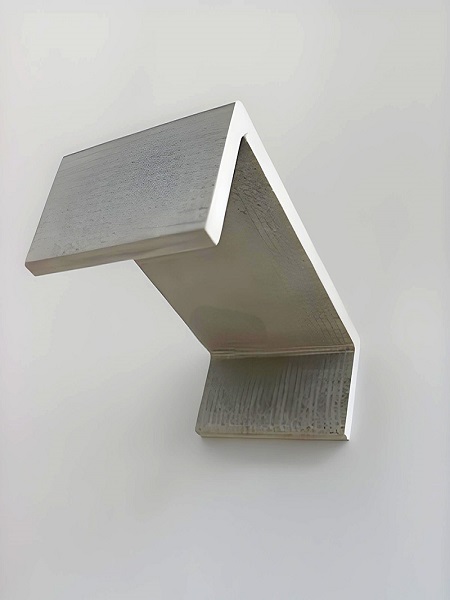
Types of Fiberglass Channels
Fiberglass Channels come in various shapes and sizes, each designed for specific applications and offering distinct benefits. Here’s a closer look at the different types:
Fiberglass U Channel
Definition and Composition: Fiberglass U Channels are named for their U-shaped cross-section. Made from fiberglass-reinforced plastic, these channels are known for their strength and lightweight properties. They consist of a composite material that combines glass fibers with a resin matrix, providing robust structural support. This makes them an excellent choice for applications such as fiber glass duct board, which is designed to enhance energy efficiency and airflow in HVAC systems.
Common Applications and Benefits: Fiberglass U Channels are commonly used in construction for structural framing, as well as in industrial settings for guiding and supporting equipment. Their main advantages include excellent resistance to corrosion and chemical exposure, making them ideal for use in harsh environments. Additionally, their lightweight nature facilitates easy handling and installation.
Fiberglass C Channel
Definition and Characteristics: Fiberglass C Channels have a C-shaped cross-section, which offers strength and rigidity while being relatively lightweight. These channels are constructed from fiberglass-reinforced composites, providing durability and flexibility in various applications.
Typical Uses and Advantages: Fiberglass C Channels are frequently employed in support structures, brackets, and framework applications. They are well-suited for environments where resistance to corrosion and weathering is crucial. Their non-conductive properties also make them beneficial in electrical and telecommunications applications. The lightweight nature of C Channels reduces the load on supporting structures and simplifies installation processes.
Fiberglass L Channel
Description and Features: Fiberglass L Channels feature an L-shaped cross-section, offering a combination of strength and stability. Made from high-quality fiberglass composites, these channels provide durability and resistance to environmental factors.
Applications and Benefits: Fiberglass L Channels are widely used in various construction and industrial settings. They are commonly found in structural supports, angle reinforcements, and framing applications. The main benefits include resistance to rust, chemical corrosion, and UV degradation. This makes them ideal for outdoor and industrial applications where longevity and minimal maintenance are required.
Structural Fiberglass Channels
Key Characteristics of Structural Fiberglass Channels
Material Composition:
Structural fiberglass channels are typically made from a combination of fiberglass and resin, which together form a composite that is strong, non-corrosive, and resistant to weathering.
The fiberglass provides tensile strength and rigidity, while the resin (usually polyester or vinyl ester) acts as a bonding agent, giving additional resistance to chemicals, moisture, and environmental degradation.
Corrosion Resistance:
Unlike traditional materials like steel or aluminum, FRP channels are highly resistant to corrosion, rust, and chemical exposure.
This feature makes them ideal for environments where metal might degrade, such as in marine, wastewater treatment, chemical processing, and coastal structures.
Lightweight yet Strong:
Fiberglass channels are generally lighter than steel and aluminum, making them easier to handle and install without heavy machinery.
Despite being lightweight, FRP channels have excellent mechanical strength, often comparable to or better than traditional metals, depending on the application.
Electrical Insulation:
Fiberglass is a natural insulator, which makes FRP channels suitable for applications where electrical conductivity is a concern.
This property is beneficial in industries that handle electrical systems or sensitive electronic equipment, as it reduces the risk of electrical hazards.
UV and Weather Resistance:
Many FRP channels are manufactured with UV-resistant additives, allowing them to withstand long-term exposure to sunlight without degrading.
Their resilience to extreme weather conditions makes them useful for outdoor installations.
Non-Magnetic and Non-Conductive:
The non-magnetic properties of fiberglass make these channels suitable for use in electromagnetic-sensitive areas.
Additionally, being non-conductive, they are often used in areas where conductivity might pose safety risks or interfere with nearby equipment.
Common Applications
- Industrial Flooring and Walkways: FRP channels are used to create supportive structures for flooring, walkways, and grating systems in factories, water treatment facilities, and chemical plants.
- Structural Supports: Due to their strength, FRP channels can serve as supports for various structural components, including beams, columns, and cross-bracing.
- Marine Construction: Their corrosion resistance makes them ideal for docks, piers, and other coastal or submerged structures.
- Electrical Infrastructure: Fiberglass channels are used in electrical enclosures, cable trays, and conduits where non-conductivity is essential.
- Transportation: Some vehicles, especially in marine and railway industries, incorporate FRP channels to reduce weight while maintaining structural integrity.
Manufacturing and Sizes
Structural fiberglass channels are manufactured through a pultrusion process, which involves pulling fiberglass rovings through a resin bath and then through a heated die to cure the composite into a solid profile. They are available in various sizes and profiles, typically ranging from small sections suitable for lightweight structures to larger, more robust channels that can handle heavy loads.
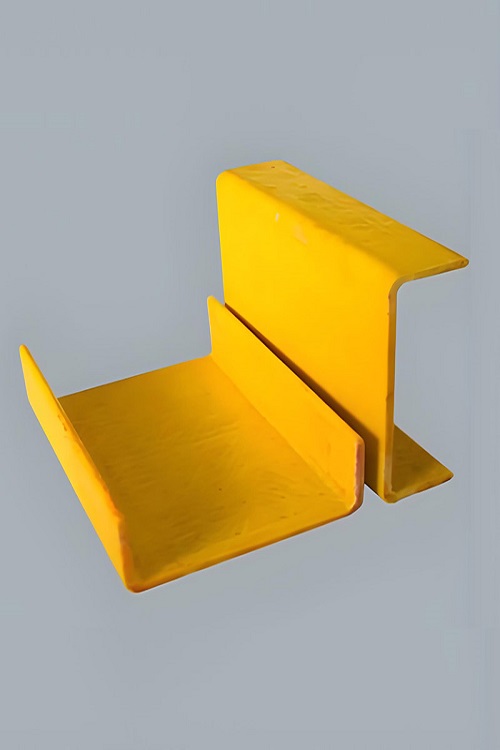
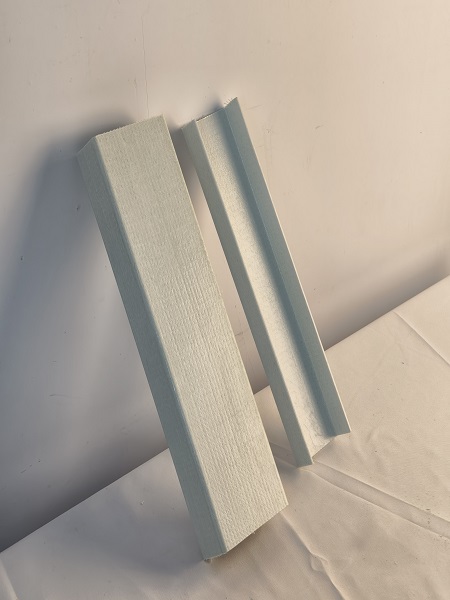
Heavy Duty Fiberglass Channels
Heavy Duty Fiberglass Channels are structural components crafted from reinforced fiberglass material, designed specifically to handle high-stress and heavy-load environments. These channels are made using high-strength fiberglass and resin, which create a composite material offering impressive durability, corrosion resistance, and a lightweight profile compared to traditional materials like steel or aluminum.
Heavy Duty Fiberglass Channels are structural components engineered from reinforced fiberglass materials, tailored specifically for high-stress applications that require superior load-bearing capabilities. These channels are produced by combining high-strength fiberglass fibers with a resin matrix, creating a composite that provides a unique balance of strength, lightweight properties, and resistance to environmental challenges. The result is a material that can withstand significant mechanical stress while resisting corrosion and deterioration in harsh environments.
Key Features and Benefits
1.High Strength and Durability:
Heavy Duty Fiberglass Channels are known for their exceptional strength-to-weight ratio, making them ideal for applications where high structural integrity is required without the burden of excess weight.
Despite being lightweight, they offer strong load-bearing capabilities comparable to steel in many applications, which makes them an excellent choice for heavy-duty structural support.
2.Corrosion Resistance:
Fiberglass channels are highly resistant to corrosion, a common challenge in industrial and marine environments.
Unlike metal materials, fiberglass does not rust or corrode, even when exposed to chemicals, saltwater, or harsh environmental conditions, making it suitable for chemical plants, wastewater treatment facilities, and offshore installations.
3.Electrical Insulation:
Fiberglass is a non-conductive material, which provides inherent electrical insulation. This feature makes these channels particularly useful in environments where electrical conductivity could pose a safety risk, such as around electrical equipment and wiring.
4.Thermal Stability:
Heavy Duty Fiberglass Channels offer reliable thermal stability, withstanding both high and low temperature extremes. This makes them suitable for applications with fluctuating or extreme temperatures, such as outdoor or industrial settings.
They do not warp, expand, or contract with temperature changes as much as metals or plastics might, ensuring structural integrity over time.
5.Ease of Installation:
Fiberglass channels are lightweight, which simplifies transportation and handling during installation. They are also relatively easy to cut, drill, and fit on-site, reducing labor and installation costs.
Minimal maintenance is required, making these channels cost-effective over their lifespan. This is especially beneficial in hard-to-access installations where regular upkeep may be impractical.
6.Versatile Shapes and Sizes:
Heavy Duty Fiberglass Channels are available in various standard profiles, such as “C” and “U” shapes, allowing them to accommodate a range of structural needs.
The channels can be customized to specific length, width, and thickness requirements, providing versatility across diverse applications.
Common Applications:
- Industrial Infrastructure: Used for structural supports, beams, and framework in facilities like chemical processing plants, pulp and paper mills, and food processing centers.
- Marine and Offshore Structures: Ideal for docks, bridges, and offshore rigs where corrosion resistance is essential.
- Electrical Environments: Suitable for cable trays, electrical enclosures, and supports where electrical insulation is beneficial.
- Public Works and Infrastructure: Frequently used in walkways, handrails, ladders, and other public installations where strength, durability, and weather resistance are crucial.
- Construction: Provides support in building structures, especially in locations exposed to harsh weather or corrosive agents.
In summary, Heavy Duty Fiberglass Channels are an effective, long-lasting solution for structural applications in both industrial and commercial settings, offering unparalleled resilience to harsh environments. They combine the advantages of strength, durability, and environmental resistance with ease of handling and minimal maintenance requirements, providing a sustainable and cost-effective choice for demanding projects.
Fiberglass Channels Sizes
Overview of Standard Sizes and Dimensions Available
Fiberglass Channels are offered in a range of standard sizes to suit various applications. Typically, these channels come in lengths ranging from 10 feet to 20 feet, though longer or shorter lengths may be available depending on the supplier. Standard cross-sectional dimensions for U, C, and L Channels vary, with common widths ranging from 1 inch to 6 inches and heights from 1 inch to 6 inches. Thicknesses also vary, typically from 0.125 inches to 0.5 inches, depending on the strength and load-bearing requirements.
Information on Custom Sizing Options and How to Determine the Right Size for Your Needs
If standard sizes do not meet your requirements, custom sizing options are often available. Custom dimensions can be tailored to specific project needs, including non-standard lengths, widths, and thicknesses. To determine the right size for your needs, consider the following factors:
Load Requirements: Evaluate the load-bearing capacity required for your application. Heavier loads will necessitate thicker and wider channels.
Application Environment: Consider the environment where the Fiberglass Channels will be used. For instance, larger channels might be needed for structural support in industrial settings, while smaller sizes could be suitable for lighter-duty applications.
Fit and Integration: Ensure that the size of the channels fits with other components of your project. Custom sizing may be necessary to achieve a precise fit or to accommodate specific design constraints.
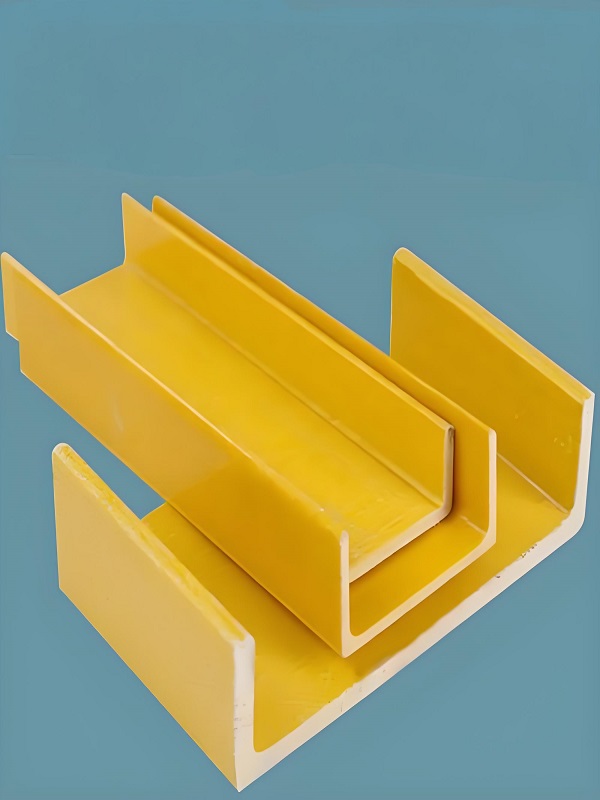
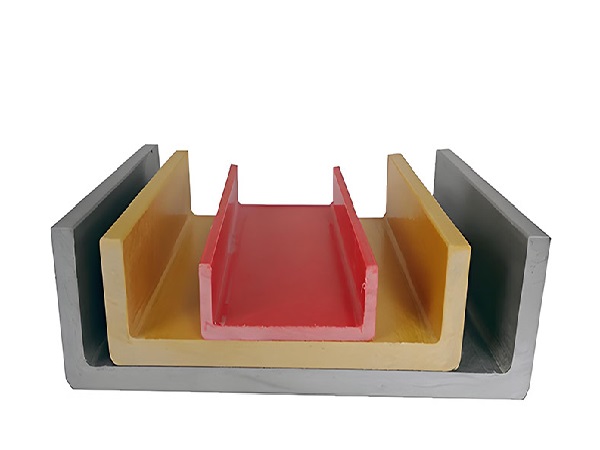
Pultruded Fiberglass Channels
Pultruded Fiberglass Channels are structural components made from fiberglass-reinforced plastic (FRP) that are formed through a pultrusion process. Pultrusion is a continuous molding process where fiberglass rovings (fibers) are pulled through a resin bath and then through a heated die to cure the resin and shape the material into the desired form. This method results in high-strength, lightweight, and corrosion-resistant components with consistent cross-sectional profiles.
Here’s a detailed breakdown of Pultruded Fiberglass Channels:
Materials and Composition
- Fiberglass Reinforcement: Pultruded fiberglass channels typically use a combination of glass fibers (such as E-glass or S-glass) for reinforcement, which provides high tensile strength and durability.
- Resin Matrix: The fiberglass fibers are impregnated with a resin matrix, which can be polyester, vinyl ester, or epoxy. The resin provides structural integrity and chemical resistance.
- Additives: Various additives may be incorporated into the resin to enhance the material’s properties, such as UV resistance, fire retardancy, or conductivity.
Manufacturing Process
- Pultrusion Process: The raw fiberglass rovings are drawn through a resin bath, where the fibers become saturated with the resin. The saturated fibers are then pulled through a heated die that shapes them into the channel profile, curing the resin in the process. This method is known for producing consistent, high-quality, and uniform profiles.
- Profiles and Shapes: Pultruded fiberglass channels come in a variety of shapes, including U-channels, I-beams, Z-channels, and custom profiles, depending on the specific requirements of the application.
Key Properties
- Strength and Durability: Pultruded fiberglass channels are known for their high strength-to-weight ratio, making them strong and lightweight. They also offer excellent resistance to bending, flexing, and stretching.
- Corrosion Resistance: Unlike metal channels, fiberglass channels are highly resistant to corrosion from environmental factors like water, chemicals, and salt, making them ideal for use in harsh environments such as marine, industrial, and outdoor applications.
- Electrical Insulation: Fiberglass is a non-conductive material, which makes pultruded fiberglass channels ideal for electrical insulation in certain applications.
- Thermal Stability: These channels offer good resistance to temperature extremes, making them suitable for applications in a wide range of temperatures, from very low to very high.
- Lightweight: Pultruded fiberglass channels are much lighter than their steel counterparts, making them easier to handle, transport, and install.
Advantages
- Low Maintenance: The corrosion-resistant properties of pultruded fiberglass channels result in minimal maintenance costs over time, especially in demanding environments.
- Customization: Pultrusion allows for a wide range of customizable profiles and sizes, providing flexibility for specific design requirements.
- Sustainability: Fiberglass is a more environmentally friendly option than some metals because it has a longer lifespan and requires less maintenance.
Limitations
- Brittleness: While strong, fiberglass can be brittle and may crack under certain types of stress (e.g., sharp impact).
- Limited High-Temperature Resistance: While it performs well under moderate temperature conditions, fiberglass is not ideal for extremely high-temperature environments (e.g., above 250°C).
- Cost: Fiberglass materials, while cost-effective in the long term due to their durability and low maintenance, can have a higher initial cost compared to materials like aluminum or steel.
Pultruded fiberglass channels offer a combination of high strength, corrosion resistance, electrical insulation, and low weight, making them an excellent choice for many industrial, marine, and construction applications where traditional materials like steel may not perform as well.
Thank you for your interest in our products. To receive our pricelist or for any inquiries, please fill out the form below. We will get back to you within 24 hours.
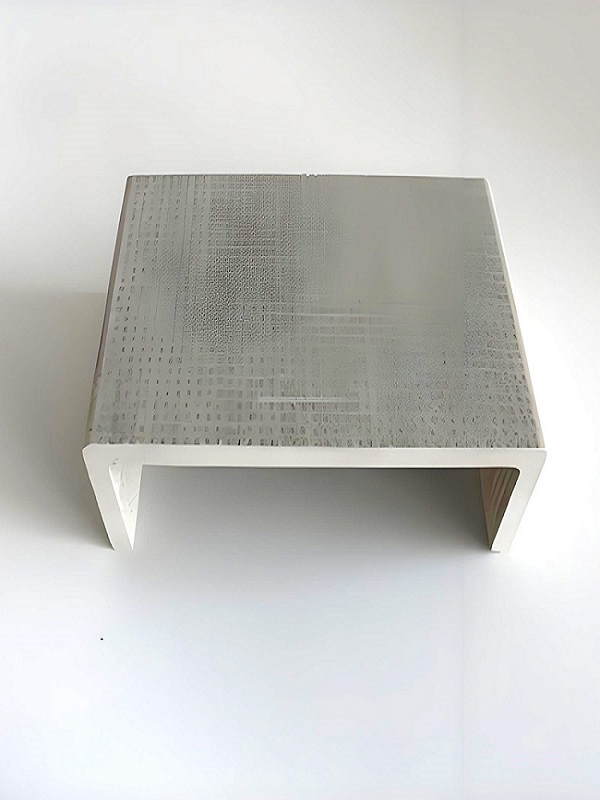
Fiberglass Channels Cost
Cost Comparison with Other Materials:
Steel Channels: Generally, steel channels are less expensive upfront than fiberglass channels. However, steel requires ongoing maintenance to prevent rust and corrosion, which can add to the overall cost over time. In contrast, Fiberglass Channels do not require painting or rust prevention treatments, making them a more cost-effective choice in the long run.
Aluminum Channels: Aluminum channels are another alternative to fiberglass, often priced similarly or slightly higher than fiberglass channels. They are commonly used as aluminum channel for 1 4 fiberglass applications, providing durability and strength for various construction needs. While aluminum offers good resistance to corrosion, it can be less durable than fiberglass under certain conditions. Fiberglass Channels typically provide better resistance to harsh chemicals and environmental factors, potentially offering greater longevity and value.
Analysis of Long-Term Cost Benefits:
Durability: Fiberglass Channels are highly resistant to corrosion, chemicals, and extreme weather conditions. This durability reduces the need for frequent replacements or repairs, which translates into lower long-term costs. In environments prone to corrosion or exposure to harsh chemicals, Fiberglass Channels often outperform metal alternatives, resulting in fewer maintenance and replacement costs.
Low Maintenance: One of the significant advantages of Fiberglass Channels is their minimal maintenance requirements. Unlike steel, which needs regular repainting and anti-corrosion treatments, fiberglass channels remain stable without additional upkeep. This low-maintenance feature not only saves on labor and materials but also contributes to the overall cost-effectiveness of using fiberglass.
Applications and Benefits
Fiberglass Channels are versatile materials that find applications across a wide range of industries. Their unique properties, such as corrosion resistance, lightweight nature, and low maintenance requirements, make them an ideal choice for various structural and non-structural applications. This section will explore the common uses of Fiberglass Channels in different sectors and highlight the key benefits that make them a preferred material for many professionals.
Common Applications of Fiberglass Channels
Fiberglass Channels are widely used in industries where durability and resistance to environmental factors are critical. Here are some of the most common applications:
Construction Industry: In construction, Fiberglass Channels are often used as structural components in buildings, bridges, and other infrastructure projects. They are ideal for environments exposed to harsh weather conditions or corrosive elements, such as coastal areas or chemical plants. Their lightweight nature also makes them easy to transport and install, reducing labor costs and time on site.
Marine Industry: Due to their excellent resistance to saltwater corrosion, Fiberglass Channels are commonly used in marine applications. They are found in boat hulls, docks, and other structures exposed to seawater. Unlike traditional materials, Fiberglass Channels do not rust or degrade in marine environments, ensuring long-lasting performance.
Electrical Industry: In the electrical industry, fiberglass channels are used as cable trays and conduits because of their non-conductive properties. Similarly, stainless steel cable tray are favored for their durability and strength, making them ideal for environments that require robust support and corrosion resistance alongside effective cable management. They provide safe housing for electrical wiring in various settings, from industrial plants to commercial buildings. The material’s insulating properties reduce the risk of electrical hazards. Transportation Industry: Fiberglass Channels are utilized in the manufacturing of components for vehicles, trains, and aircraft. Their lightweight nature contributes to overall weight reduction, which can improve fuel efficiency and reduce emissions. Additionally, their durability ensures that these components can withstand the rigors of daily use and exposure to the elements. The widespread use of Fiberglass Channels in various industries can be attributed to their numerous benefits. Here are some of the key advantages: Corrosion Resistance: One of the most significant benefits of Fiberglass Channels is their resistance to corrosion. Unlike metals, fiberglass does not rust or corrode when exposed to moisture, chemicals, or saltwater. This makes it an excellent choice for environments where traditional materials would quickly degrade. Lightweight: Fiberglass Channels are significantly lighter than metal alternatives like steel or aluminum. This lightweight nature simplifies transportation, handling, and installation, reducing both labor and shipping costs. Despite being light, Fiberglass Channels are strong and durable, capable of supporting substantial loads. Low Maintenance: Once installed, Fiberglass Channels require minimal maintenance. They do not need painting or special coatings to protect them from the elements, and they are resistant to mold, mildew, and insect damage. This low maintenance requirement translates into long-term cost savings for projects. Non-Conductive: The non-conductive nature of Fiberglass Channels makes them a safe choice for electrical applications. They provide excellent insulation, reducing the risk of electrical shocks and enhancing safety in environments where electrical hazards are a concern. Versatility: Fiberglass Channels can be easily customized to fit specific project requirements. They can be cut, drilled, and shaped without compromising their structural integrity, making them highly adaptable to various applications.Key Benefits of Fiberglass Channels
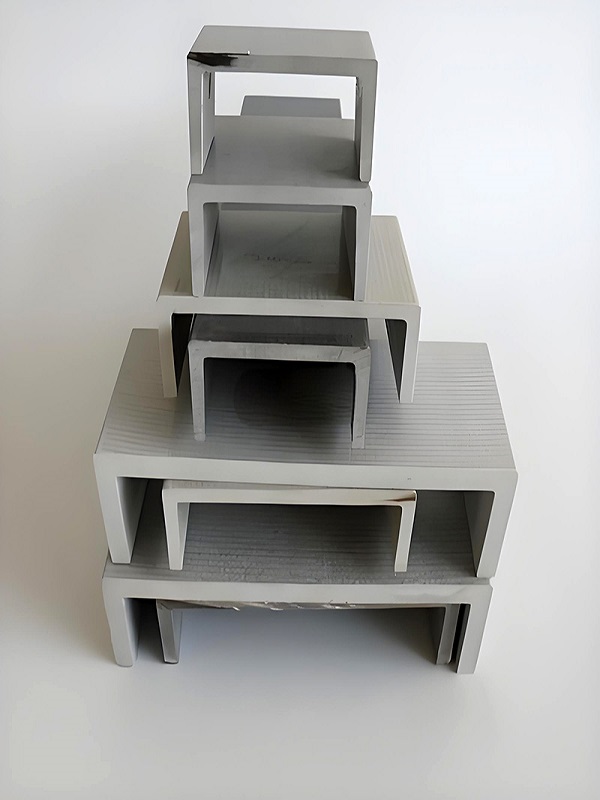
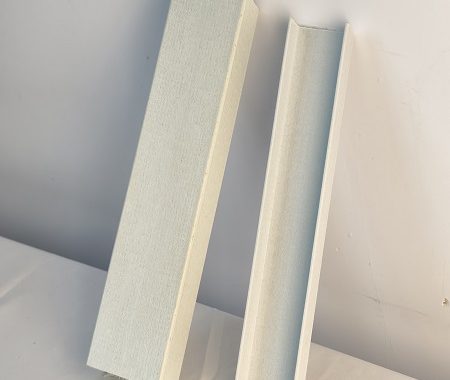
Fiberglass Channels VS Traditional Steel and Aluminum Angle
When comparing fiberglass channels to traditional steel and aluminum angles, there are several key factors to consider, including strength, weight, corrosion resistance, cost, and application suitability. Here’s a detailed comparison:
Material Composition and Manufacturing Process
Fiberglass Channels:
Made from fiberglass reinforced with a resin matrix (such as polyester, vinyl ester, or epoxy).
Manufactured using the pultrusion process, where fibers are pulled through a resin bath and cured into a specific shape.
Result in lightweight, corrosion-resistant, and electrically insulating materials.
Steel Angles:
Made from carbon steel or stainless steel, often shaped using rolling or extrusion processes.
Can be heat-treated for improved strength.
Steel is prone to rust and corrosion unless treated with coatings like galvanization or stainless steel is used.
Aluminum Angles:
Made from aluminum alloys, often extruded or rolled into shape.
Naturally resistant to corrosion due to the formation of a protective oxide layer, but still susceptible to wear in extreme conditions.
Lighter than steel but heavier than fiberglass.
Strength-to-Weight Ratio
Fiberglass Channels:
High strength-to-weight ratio: Fiberglass offers excellent structural strength while being significantly lighter than steel.
Ideal for applications where reducing weight is critical, such as in aerospace, marine, or construction.
Steel Angles:
Very strong and dense, making steel the material of choice for heavy-duty structural applications.
Heavier than fiberglass, which may not be ideal in situations where weight reduction is a priority.
Aluminum Angles:
Lighter than steel but heavier than fiberglass.
Offers good strength, though not as strong as steel in heavy-duty applications.
Corrosion Resistance
Fiberglass Channels:
- Superior corrosion resistance: Fiberglass channels are highly resistant to water, chemicals, salt, and most environmental factors. This makes them ideal for marine, chemical, and other harsh environments where metals are prone to rust.
- Longer lifespan in corrosive environments, reducing maintenance costs and extending the material’s service life.
Steel Angles:
- Prone to rust and corrosion unless treated (e.g., galvanized or stainless steel).
- Requires regular maintenance and coatings in corrosive environments to maintain structural integrity.
Aluminum Angles:
- Corrosion-resistant due to the natural oxide layer on the surface. However, it can still corrode in extreme conditions (e.g., exposure to saltwater or certain chemicals).
- Anodizing can improve corrosion resistance but adds additional costs.
Electrical Insulation
Fiberglass Channels:
- Non-conductive: Fiberglass is an excellent electrical insulator, making fiberglass channels ideal for applications requiring electrical safety, such as electrical enclosures or supporting electrical components.
- Essential for installations in high-voltage or sensitive environments.
Steel Angles:
- Conductive: Steel conducts electricity, which can be a safety concern in electrical applications unless properly insulated or grounded.
Aluminum Angles:
- Conductive: Similar to steel, aluminum is also conductive and requires insulation in electrical applications.
Temperature Resistance
Fiberglass Channels:
- Can withstand moderate temperatures but are limited in high-temperature environments (typically up to 250°C).
- Perform well in temperature variations, though not suitable for extremely high-heat applications.
Steel Angles:
- Can withstand high temperatures and are commonly used in applications requiring heat resistance.
- Steel alloys can be heat-treated to withstand even higher temperatures.
Aluminum Angles:
- Lower melting point than steel, typically around 660°C, which limits its use in high-temperature environments.
- Still suitable for applications exposed to moderate heat, such as in aerospace or automotive industries.
Cost and Availability
Fiberglass Channels:
- Typically more expensive upfront than steel or aluminum due to the specialized manufacturing process (pultrusion) and materials.
- The cost is offset by long-term savings due to durability, corrosion resistance, and low maintenance needs.
Steel Angles:
- Generally less expensive than fiberglass and aluminum, especially for carbon steel.
- More widely available, with a broad range of suppliers and standard sizes.
Aluminum Angles:
- Aluminum tends to be more expensive than steel but is cheaper than fiberglass.
- More readily available than fiberglass but not as ubiquitous as steel.
Applications
Fiberglass Channels:
- Ideal for marine, chemical processing, construction, and electrical applications due to corrosion resistance, low weight, and electrical insulation properties.
- Used in environments where maintaining structural integrity despite exposure to harsh conditions is critical.
Steel Angles:
- Best suited for heavy-duty structural applications, including in bridges, buildings, and industrial machinery.
- Used in applications requiring high strength and where corrosion resistance can be managed or is not a primary concern.
Aluminum Angles:
- Suitable for lightweight structural applications such as in aerospace, automotive, and some construction projects.
- Used when corrosion resistance is required but not at the extreme levels needed for marine or chemical environments.
Environmental Impact
Fiberglass Channels:
- Environmentally friendly in terms of maintenance and long service life. However, fiberglass can be difficult to recycle, and some resins used in production may have environmental concerns.
- More sustainable in the long run due to reduced need for replacements and repairs.
Steel Angles:
- Steel is recyclable and widely recycled, making it a more environmentally friendly option compared to fiberglass in terms of resource reuse.
- The energy-intensive process of steel production can have a higher environmental footprint.
Aluminum Angles:
- Highly recyclable, and aluminum production has a lower environmental footprint than steel.
- Like fiberglass, aluminum requires energy-intensive processes to produce but has a higher recycling rate.
Summary Table:
| Property | Fiberglass Channels | Steel Angles | Aluminum Angles |
|---|---|---|---|
| Strength-to-Weight | High strength-to-weight ratio | Very strong, heavy | Moderate strength, lighter than steel |
| Corrosion Resistance | Excellent, ideal for harsh environments | Prone to rust, requires coating | Corrosion-resistant, but not as durable as fiberglass |
| Electrical Insulation | Non-conductive | Conductive | Conductive |
| Temperature Resistance | Moderate (up to 250°C) | High (depending on alloy) | Lower than steel (up to 660°C) |
| Cost | Higher upfront, long-term savings | Low cost, maintenance required | Moderate cost |
| Applications | Marine, chemical, electrical, construction | Heavy-duty structural | Lightweight structures, automotive |
| Environmental Impact | Lower long-term impact | Recyclable, energy-intensive | Highly recyclable, moderate energy use |
- Fiberglass channels excel in applications requiring corrosion resistance, electrical insulation, and lightweight materials. They’re ideal for industries like marine, electrical, and chemical processing.
- Steel angles are suited for heavy-duty, high-strength applications but require maintenance due to their susceptibility to corrosion.
- Aluminum angles are best for applications needing a balance of strength and corrosion resistance but are limited in high-temperature and heavy-duty settings.
Choosing the right material depends on the specific needs of your project, including environmental factors, load-bearing requirements, and long-term cost considerations.
High-Performance Fiberglass Channels Factory
Ganglong Fiberglass offers durable and versatile fiberglass channels, an essential part of our extensive fiberglass product line, featuring over 100 fiberglass shapes. Each channel is crafted using a proprietary composite material design, ensuring unmatched quality and performance. Known for their reliability and durability, Ganglong Fiberglass products are the preferred choice for various industrial applications.
Key Features of Ganglong Fiberglass Channels
- Corrosion Resistance – Withstands harsh environments without rusting or degrading.
- Low Thermal and Electrical Conductivity – Ideal for electrical and high-temperature applications.
- Non-Magnetic & Electromagnetically Transparent – Suitable for specialized industrial uses.
- Lightweight Yet Strong – Offers excellent strength-to-weight ratio for easy handling and installation.
- Dimensional Stability & Low Maintenance – Ensures long-term durability with minimal upkeep.
Commitment to Quality & Reliability
Our fiberglass channels are manufactured in ISO 9001-certified facilities, meeting the highest industry standards. With a global distribution network and a commitment to fast delivery, we are your trusted partner for industrial plastic solutions.
Wide Range of Fiberglass Channel Options
We offer a variety of fiberglass channel types that comply with international standards. As a direct factory supplier, we control the entire production process, from raw materials to final manufacturing, ensuring superior quality at competitive prices.
- Advanced FRP Channel Production – Manufactured using state-of-the-art equipment.
- Extensive Warehouse Inventory – Large stock available for immediate shipment.
- Custom Sizes Available – Tailored fiberglass channels to fit specific project requirements.
- Fast Shipping – Ready-to-ship inventory ensures quick delivery to your location.
Ganglong Fiberglass is dedicated to providing top-quality fiberglass channels for a wide range of applications. Contact us today to explore our fiberglass solutions and secure the best products for your project.
Thank you for your interest in our products. To receive our pricelist or for any inquiries, please fill out the form below. We will get back to you within 24 hours.
